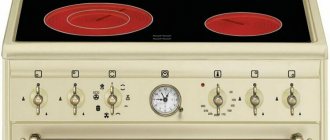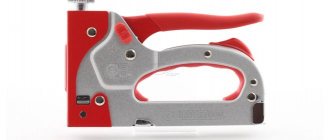The dishwasher was invented to make the work of housewives easier. Now it is present in almost every kitchen. With their stylish design, dishwashers fit perfectly into a modern, technological interior. Even the smallest models can handle a lot of utensils. If the family is large, and the size of the kitchen allows you to accommodate a dishwasher, and even a large one, then this is a good reason to buy a larger device. Just one session is enough to clean all dirty dishes. Saving time in everyday life is very important, so it is better to avoid routine actions and transfer as many functions as possible to household appliances. Additional time can be spent on other chores. For any dishwasher, size is one of the main aspects, and sales advice and general information will help you decide on it.
What to look for when choosing a dishwasher
The first thing to know is performance. Machines of the same brand wash dishes with varying success, and the price is not always directly dependent on this factor. The best PMM models ideally remove grease from plates that have remained unwashed for 2-3 days. Another important selection criterion, the noise level largely depends on the cost of the device. Even noise ratings have been compiled. If old cars produced a sound pressure of 80 dB, now the figure has dropped to 50 dB. For the average price range it is in the range of 40-50 dB, and for cars in the expensive segment the noise level is below 40 dB. There is no need to skimp on comfort. Next, pay attention to the number of speeds and modes. Modern dishwashers have the following modes: normal, auto, express. You can get more benefits with machines with heavy, gentle and effective modes.
Other aspects:
- consistency with the finishing style;
- dimensions;
- capacity;
- filter type;
- drying power.
3 in 1 dishwashers
Such machines are distinguished by automation from Calgonit “3 in 1”. When washing in this mode, Calgonite solutions are used, including a combination of detergent, generating agent and rinse aid.
The “dishwasher” is rebuilt automatically depending on what exactly it is loaded with: each product separately, or a “3 in 1” tablet. The latter saves time and money. The washing cycle adapts to the ambient temperature, the product used and other conditions.
Types of dishwashers by size
Based on the sizes, there are:
- full size;
- narrow;
- compact.
Each case needs its own option. In restaurants with a large flow of customers, dozens of sets need to be washed at a time. On private property we are talking about 15-20 plates over several days. Unlike ovens, dishwashers do not have the same standard sizes. The height from the floor of tall full-size and narrow models is 818-898 mm. The depth of traditional options is 570-600 mm, which is ideal for the lower tier of the kitchen. Some compact modifications are only 450 mm deep or less. The dishwasher base is quite high - 120-190 mm. The highest variations are nineteen centimeters - about 97 cm. The lowest models of the compact type are below the level of 45 cm. They are placed anywhere: under the table, on it, in small recesses and in free space. The width of dishwashers is 30-65 cm. A family of 2-4 people does not need to buy full-sized machines.
For private houses with two kitchens, it is better to purchase not two full-size dishwashers, but one with an increased width.
Full size
Such machines are suitable for large families and large kitchens, as well as for restaurants. Full-size models are 59.5–60 cm wide, 56–63 cm deep and 81–85 cm high. The standard size parameter is 60x60x85 cm. Full-size dishwashers are designed for a large volume of dishes, up to 14 sets. Large capacity reduces the total number of PMM operating sessions and significantly reduces the need for manual washing. Positive qualities are complemented by energy savings with high efficiency and volume of work. Owners of small kitchens, unfortunately, are deprived of such opportunities. In tight spaces, full-size PM machines are replaced with standard 45-centimeter models. For some housewives, a full-sized PMM is a serious hindrance. You can make work in the kitchen easier by removing the dishwasher altogether.
Narrow
This is the name for models with a width of 40 to 45 cm. Equipment with a 45-centimeter width is capable of washing 8-9 sets of dishes at a time. The depth of the units coincides with that of full-size modifications. The height of narrow dishwashing machines reaches 85 cm, as is the case with full-sized ones. The general functionality of the narrow options is also in no way inferior. In Russia they mainly sell 45 cm models, but 40 cm ones have to be ordered. A less capacious device will then cost more. Narrow models look best with furniture sets. Among the many narrow dishwashers, designer options are often found. They are easy to use and maintain, and by definition make less noise than larger models. The problem with some narrow PMMs is that they cannot be placed under the tabletop due to their height, but in this case a lot depends on the height of the table/cabinet itself.
Compact
The third subspecies in terms of size characteristics is compact. The configuration of these dishwashers comes with a small width - 35 cm or less with a depth of up to 60 cm, as well as with a small depth - up to 45 cm with a width of 40 cm to 60 cm. The height of compact variations rarely exceeds 50 cm, standard models have 44-45 cm in height. Considering all the functions of small dishwashers and the typical amount of dishes that accumulate over several days, this is a viable option for most cases. If necessary, compact PMMs are installed on the table. In addition, they are easily mounted in wall niches and specially designed furniture sections. The won space is filled with other kitchen appliances. Compact PMMs are suitable for washing all types of dishes. Well, the main advantage is the opportunity to save money.
What are there
The dishwasher comes in several varieties:
- full-size models - characterized by standard sizes;
- narrow: the depth, as well as the height of the dishwasher, does not differ from the first option, but units of this type are characterized by a smaller width;
- compact: designed for installation on a table, under a sink, and have minimal dimensions.
The smallest dishwashing machine is 1/2-1/3 smaller than standard analogues in height. They also come in narrower and wider versions. Such devices differ in capacity, level of energy consumption and water consumption. The standard height, depth and width of the dishwasher allows you to place up to 16 place settings inside. Compact equipment holds no more than 9 sets, and more often - 6-8. In addition, PMM is divided into types depending on the type of installation:
- free-standing;
- built-in
The dimensions of dishwashers in both cases are also different. This is due to the need to locate and secure equipment inside cabinets. Standard free-standing devices cannot be hidden behind the façade of a kitchen unit. The difference between the dimensions of these types can be several centimeters.
Full size
This group includes built-in dishwashers (for the cabinet) and free-standing counterparts. The sizes of the devices vary:
- height: from 82 to 85 cm - the most common options, there are models up to 97 cm in height;
- width and height of devices - these parameters are often the same, they vary from 55 to 60 cm.
The dimensions considered are standard. The exception is dishwashers with a height of 80 cm. The capacity of full-size units does not always depend on the main dimensions. Thus, there are models of equipment that can hold the same amount of dishes as in the case of a narrow or compact machine. At the same time, the equipment differs in resource consumption, which makes full-size models less preferable due to low capacity and significant energy consumption and water consumption.
Devices characterized by large dimensions are rarely used in everyday life. They are chosen for installation in rooms with non-standard layout, dimensions, and configuration. Thus, there are models up to 87 cm wide. They are difficult to find on the open market. Despite this, units of this type do not belong to professional equipment.
Full-size devices are used in rooms where there is a lot of free space, even if the kitchen itself is small.
However, in this case, a model with standard dimensions can still fit. This opportunity arises if you plan to install a small kitchen unit or do without it using free-standing cabinets.
When choosing equipment by size, you need to take into account its operating conditions. For example, it is difficult to find devices that exceed 60 cm in depth. This is due to the fact that the equipment should not be larger in size than the countertop. So, the width of the working surface is often 60 cm. This is the most convenient option.
In addition, the type of control is taken into account. The need for this is due to the presence of handles on models operating on the basis of mechanical and electronic-mechanical systems. These elements will rise above the surface of the body. It is advisable that they do not protrude beyond the facade of the kitchen unit, as this can cause a dangerous situation: while moving past the PMM, clothes will cling to the handles.
Built-in appliances may vary in size downwards:
- width - 598 mm;
- height within 815-875 mm;
- depth 550 mm.
For installation in furniture, a small gap is provided between the inner surface of the cabinet and the device. This will allow you to correctly position such equipment. In addition, a machine designed for built-in often lacks a front panel, which can also affect the overall dimensions, albeit slightly.
Narrow
Such units do not differ from full-size analogues in height and depth. Their width is 450 mm. This is the standard for this group of equipment. The narrowest model is 445 mm. In addition, there are devices with non-standard dimensions: width 466 and 448 mm, depth up to 573 mm. In height, such models are also often superior to their analogues - up to 850 mm.
The narrow machine saves space. When installing it, space is freed up next to such equipment. This option is used in small rooms, where every centimeter of space counts. Thanks to the use of narrow devices, it becomes possible to install other floor-standing appliances, for example, a washing machine.
Rarer models are 35 or 40 cm wide. They are difficult to find on the open market. This is due to the extremely compact dimensions, which often does not allow full use of the equipment, since it holds few dishes. As a result, you have to constantly wash plates, pots and cups yourself. This, in turn, increases water consumption.
There are narrower dishwashers (30 cm wide). Such models can have significant depth and height. This will compensate for the small dimensions. However, it will be difficult to place non-standard appliances in a kitchen where space is limited.
Compact
Devices of this type are characterized by a minimum height: ranging from 44 to 70 cm. The width, as well as the depth of such equipment, is often standard and leaves, respectively: 60 cm; 55 cm. Compact units with a minimum height of 44 cm are more common. Thanks to its size, a small dishwasher can be considered mobile. So, it can be installed in any convenient place where you can extend the hoses: under the sink, on the table, inside the cabinet.
The advantage of these models is their significant capacity. Along with the low level of resource consumption, this factor makes such units the most efficient and economical. As a result, the costs of its work are reduced. However, the minimum dimensions are a disadvantage if a device is being considered for use in a house where a large family lives.
Characteristics and dimensions of free-standing PMMs
Such dishwashers are installed anywhere, unlike fully or partially built-in ones. Free-standing modifications are divided mainly into floor-standing and table-top, that is, they are adapted to specific conditions and are rarely made universal. Almost all mobile models are intended to be household, not industrial, but in enterprises and industries there is not always a need for PMMs other than household ones. The width of free-standing variations rarely goes beyond 45-65 cm. The height of free-standing equipment differs significantly, but is selected so that the unit can be hidden under the dining table. In some cases, it reaches almost 1 m. Comfortable use of free-standing PMMs is possible with a thickness (depth) of no more than 60 cm. The optimal depth for compact kitchens is 40 cm.
When choosing the depth of your dishwasher, you should also consider how much the handles protrude.
Freestanding floor machines: characteristics
Devices that are installed on the floor can be full-size or narrow. This type of PMM has a wide range of models and is the most popular among buyers. This is due to the fact that such devices are able to meet the needs of families with children.
Mobility is one of the undoubted advantages of freestanding dishwasher models
The width of a freestanding dishwasher depends on its type. For example, for narrow models this figure is 45 cm (standard). There are also wider aggregates included in this group, but they are less common. The width of full-size PMMs, as mentioned above, can reach 60 cm. The height of devices belonging to both types of free-standing units reaches up to 97 cm.
It is important to remember that the depth of full-size and narrow PMMs does not exceed 60 cm. This figure is explained by the dimensions of standard kitchen furniture. Most often, the dishwasher is installed under the countertop, which allows the device to fit most harmoniously into the interior of the room. If necessary, you can purchase a dishwasher with a depth of 40 cm. This choice is recommended for the most compact kitchens.
When choosing a freestanding dishwasher, experts advise thinking through some nuances. For example, if the control panel of the device is of a mechanical type, then you can choose a less deep PMM. This will prevent the handles from protruding beyond the line of the kitchen unit.
The depth of narrow dishwashers does not exceed 60 cm, this figure is explained by the size of standard kitchen furniture
The spacious dimensions of dishwashers belonging to the freestanding group allow you to clean a large number of dishes and cutlery at one time. However, this characteristic affects the consumption of electrical energy and water. Large devices are 1.5-2 times less economical than small ones.
Large dishwashers
PMMs from 60 cm and wider are called large-sized. Moreover, 70 cm is far from the largest size. In the household departments of hypermarkets, they even display models with an 85-centimeter width - non-mass-produced devices. Wide machines can accommodate up to 20 sets of dishes. For a family of 5-6 people, full-sized PMMs are usually enough, but large ones are suitable if they do not take up too much free space. Before you buy something from the large-size line, you need to allocate space for equipment. Dishwashers are installed not only in kitchens, but also in bathrooms and dead-end rooms. Large-sized models can hold more dishes, although the stated capacity may be the same as simple full-size machines. Extra large devices handle pots and pans much easier.
Narrow PMM 45 cm: pros and cons
Let us briefly highlight the main advantages and disadvantages of narrow models.
- Compact and ergonomic. The point is not even in saving free space, but in the optimal placement of PMM in the kitchen, especially small-sized ones. The smaller the machine, the more appropriate it looks in the interior. You can easily integrate a narrow model into a kitchen cabinet, even if you choose a non-built-in option - just install it in a cabinet of a suitable size.
- Large selection and variety of models. We will return to this issue in detail in the main part of the review with examples of models. But in general, the statistics of marketing specialists are such that 45 cm cars are bought many times more actively than usual, and if there is demand, then the market undoubtedly has supply.
- There are no problems with the selection of the facade. Taking into account the previous point about the popularity of narrow modifications, it is much easier to choose a furniture façade for a narrow PMM. Often the door for wide devices is made to order, and this is unnecessary gestures.
- Saving 15 cm of free space in the room.
The pros are clear, but what about the cons? There are no less of them:
- Not all utensils fit into the bunker. Baking dishes, large pots, baking sheets - all this can simply go into the sink for hand washing. The dishwasher should do the washing, not you.
- Durability and manufacturability are not something the owner of such equipment can be proud of. Due to savings on the housing, the parts are located close to each other, which negatively affects their service life. As a result, cars last 2 or even 2.5 years less.
- Large families won't be happy. If at least 3 other people live with you, it is better to abandon the idea of such a purchase - the capacity of the camera will not be enough.
Narrow
Advantages:
- Compact and ergonomic design. A narrow dishwasher saves space in the kitchen and can be easily integrated into standard cabinets from most kitchen furniture manufacturers.
- Big choice. Because The demand for narrow models is great, there is more variety in the model range compared to full-size dishwashers.
- Choice of cladding. The popularity of narrow built-in dishwashers allows you to choose a facing panel with a ready-made color and texture solution. Most kitchen furniture manufacturers already have ready-made facades included in the set.
Flaws:
- Large dishes will not fit into the interior of the dishwasher. Cauldrons, duck pots, trays, baking sheets, frying pans will require manual washing or an additional run of the dishwasher.
- Lifetime. The narrow body does not allow free placement of working units. Lack of space for functional units reduces the service life of the machine by an average of a couple of years.
- A narrow PMM will not cope with a large number of dishes in 1 cycle. Using such a model for sets of dishes for 5-7 people will require additional cycles of operation, which will lead to increased consumption of electricity, water and time.
- Choosing your first dishwasher from a plethora of brands and models can be more of a challenge than purchasing and installing it.
Advantages and disadvantages of compact PMMs
The size of the machine depends on the energy consumption, hot and cold water consumption. Mini PMMs can be separate or built-in, and a variety of installation options are possible - on the floor, on a table, partial and full installation. The main advantage of small PMMs is their size. A small rearrangement in a cramped kitchen is all it takes to find space. Since the load is small, you won’t have to wait as long as it would take to fill large units. The installation process of mini-models is as simple as possible, and power consumption in the most productive mode is relatively low. Mobile mini PMMs are much easier to move than others. Among the disadvantages are difficulties with washing baking sheets, pans, and pots. Some things won't fit at all. It is worth noting that constant washing when the machine is completely full affects the condition of the equipment. Another drawback is the price. Compact models sometimes cost almost the same as larger ones, but at the same time they are more spacious.
Functionality, pros and cons of small/mini PMMs
Due to the small depth of mini PMMs, they are useful for small families. Tabletop options, for example, can accommodate up to 6 sets of kitchen utensils. Due to the peculiarities of its operation, it is allowed to be used on shelves, including inside wall-mounted furniture sections. The most common devices are those with a height of 45 cm. The smallest PMMs resemble microwave ovens. Compact dishwasher programs include pre-soak, delicate, standard and express modes. To correctly connect compact models, just read the short instructions. There are some disadvantages. It is most likely not suitable for large families. After all, if a family consists of 5 people, everyone may need at least a couple of washed dishes at any time. For places other than apartments and small houses, mini PMMs are not suitable.
Small narrow dishwasher under the sink
Location under the sink is the second most popular solution. Narrow, compact options fit easily under the sink. Thus, the dishwasher and faucet are closer to each other, and it is more convenient to use them in pairs. Installing under the sink is also a huge space saver. Mini PMM with a width of 40 cm washes up to 5 sets at a time. The devices are provided with protection against leaks, so there is no need to worry about the condition of equipment that is closed with a door and is not in plain sight. A forty-centimeter mini PMM is also used in dachas, although for such a place of application it is a rather expensive option per unit of power. Narrow mini-dishwashers are not used for washing kitchen utensils made of porcelain, wood and plastic. Among other things, the possibility of installation depends entirely on the configuration of the kitchen. In general, the option is convenient and aesthetic.
type of instalation
The modern household appliances market offers a huge range of dishwashers from the most famous and less popular brands, which are primarily divided into two categories based on the type of installation. Dishwashers can be built-in or free-standing. The first type of machine most often includes expensive premium devices that can be built under the countertop, leaving the control panel and dishwasher door open. Also, such machines can be completely closed with the door of the kitchen unit if the owners of the room do not want to disturb the design of the kitchen.
Built-in dishwasher
Free-standing dishwashers are purchased if the dimensions and other features of the kitchen do not allow for the possibility of integrating a dishwasher inside the kitchen unit. Such a device can be placed in any suitable place in the room, but it is worth considering that it takes up quite a lot of space and for this reason is only suitable for large kitchens.
Its main advantage is considered to be convenient access to the rear panel in case of need to replace a part or disassemble the machine for repair purposes.
Freestanding dishwasher
Another type of dishwasher is the countertop dishwasher, which is ideal for even the smallest kitchen spaces. It can be simply placed on the work surface of the countertop or built into a kitchen cabinet of almost any size. It should be borne in mind that the tabletop version is suitable mainly for small families where there is no need to wash too many dishes.
Countertop dishwasher
Each type has its own pros and cons, so a built-in dishwasher:
- fits perfectly into the interior of the kitchen and does not spoil the design of the room;
- it is difficult to repair, cannot be moved, such models are usually expensive.
Stand-alone machine:
- can be installed anywhere and freely rearranged;
- sometimes it does not fit into the interior of the kitchen space and takes up a lot of space;
Desktop machine:
- it is inexpensive, it can be freely transported and carried, it has compact dimensions, and can be built into wall cabinets;
- not suitable for a large family, only a small amount of dishes required, not economical enough.
Dimensions of built-in dishwashers
Furniture for small-sized kitchens is designed for the use of built-in household appliances. Integrating devices into a set is also a design move. Furniture niches are designed according to the most popular dimensional characteristics. All that remains is to find the technique with the required parameters. There are also opposite recommendations: select a furniture set after purchasing kitchen appliances. Built-in PMMs come in full-size, narrow and compact. The first type has a width in many cases of 60 cm, a depth of 55, and a height of 82 cm. The size of the typical narrowed version is the same in terms of height and depth, but the width is 15 cm shorter. It is better to “fit” a 35-centimeter model into a stylish modern interior. Compact built-in options vary greatly in terms of configuration. A machine with a depth of 50, a width of 55 and a height of only 44 cm is often installed in the wall.
Height of dishwashers: built-in and freestanding
The level of placement of the countertop is important - for equipment built into the lower tier. The second factor is the height of the owners: mini-devices for shelves may be inaccessible for short people. That is why the average growth rate is taken into account. The lower part of the built-in and free-standing versions of the PMM is equipped with legs of different heights, and sometimes they provide the possibility of adjustment by 5-6 cm. Physical activity must be taken into account. Heavy PMMs, even mobile ones, are difficult to rearrange many times, so the constant storage height should be placed at the level of your lowered arms or slightly lower. High placement is generally dangerous. If the dimensions of the niche are known, proceed to measuring the parameters of the dishwasher. Even when buying a kitchen wall, you need to be interested in various nuances. To accommodate built-in dishwashers with a height of 70-97 cm, an appropriate distance between shelves is required, unless a special niche is provided.
Dishwashers are divided into 3 categories based on height:
- Low - up to 55 cm;
- Medium - 55-81 cm;
- Tall - 81-97 cm.
Dimensions of full-size built-in dishwashers
Full-size fully built-in PMMs can accommodate from 12 to 17 sets of dishes, each of which consists of 6-8 items: plates for soup and main course, saucer with cup, spoon and fork. This capacity is suitable for a large family, especially with small children.
Standard sizes are:
- height - from 81.5 to 82 cm - it is enough for the machine to fit under an 85 cm tabletop;
- width - 55 cm, so they fit freely in a cabinet 60 cm wide;
- depth - from 59.5 to 60 cm.
All devices are equipped with a large set of auto programs, electronic control, reliable protection against leaks, and have several baskets for dishes and cutlery. One of the most spacious and inexpensive Gorenje GV66260 machines, for example, has TotalDry dryers, which allows you to get shiny, dry and cool dishes, as well as energy efficiency class A+++.
Full size built-in dishwashers
Full size built-in dishwashers
Full size built-in dishwashers
Built-in dishwasher 60 cm high
These are relatively low-profile models among full-size dishwashers. They fully satisfy the needs of the average family. The option with a 60-centimeter height is both spacious and compatible with sections specially designed for the installation of equipment. There is space for built-in dishwashers in medium and small kitchens. Most often, a compartment under the countertop is allocated for the mounted PMM, just for a device no more than 60 cm in height. In most cases, the module under the PMM is designed with a door. The machine is controlled either on the door or on its end, so in a closed-type module the second option feels extremely inconvenient. If the dishwasher barely fits into the cabinet, then adjustable legs will come in handy. At the same time, built-in models are still 2-3 cm lower than free-standing ones. As for the location of the desired cabinet, it is usually located next to the sink.
Connection to cold or hot water supply
Already at the stage of choosing a dishwasher, it’s time to think about its subsequent connection. The future user should be aware that some models can be connected to only cold water supply, while others can be connected to hot and cold water at the same time.
The first option, according to experts, is preferable, since cold tap water contains less foreign impurities, rust, etc. than hot water. Of course, grease from dirty plates and pots cannot be washed off with cold water, but the dishwasher itself is capable of heating cold water to the desired temperature. However, this also leads to the main disadvantage of this type of connection: the dishwasher will consume much more electricity during its operation.
The “hot-cold” connection type is more energy efficient: you can significantly save on water heating. All that remains is to think for a moment about what hot water contains besides the water itself. If the quality of hot tap water in your city/town does not worry you, we recommend purchasing a dishwasher that matches this particular type of connection.
Narrow dishwashers 45 cm wide or less
45 cm models gained popularity among consumers at a time when all manufacturers were trying to reduce the size of any kitchen appliance. PMMs up to 45 cm wide are intended for use in tight spaces and square-shaped rooms. Both freestanding and built-in models are designed to save space. The mobile version can simply be hidden under the table. For a stationary dishwasher, you will need a special drawer so as not to take up space in the cabinets for large appliances. It is possible that such a module can be found on sale, but most likely you will need to wait until it is manufactured according to the specified parameters. The height of 45-centimeter dishwashers reaches the same values as conventional ones - from 60 to more than 90 cm. The thickness, in turn, is consistent with the depth of the lower kitchen unit - 60 cm.
45 cm dishwashers – advantages, disadvantages and who should buy them
Whether a 45 cm or 60 cm dishwasher is better can be discussed only after a basic review of both options has been completed, and the appropriateness of using one or another model in a particular case has been clarified. If we talk in more detail about dishwashers 45 cm wide, then it is worth noting that they have many advantages, among which it is worth noting the following:
- take up little space in the kitchen, but are quite spacious inside;
- have the same set of programs as standard size machines;
- look stylish and modern;
- There are many built-in models, which allows you to choose the most optimal option for a specific kitchen;
- operate virtually silently, consume little water and electricity;
- have full or partial protection against leaks, children and overheating;
- have adjustable boxes, which allows for high-quality washing of any kitchen utensils;
- there are built-in smart sensors that allow you to regulate the processes of washing, rinsing and drying, as well as select the most optimal operating mode;
- you can buy a pretty good model for 25 thousand rubles.
Manufacturers have learned to make machines that are compact in appearance, quite spacious, and equipped them with the best innovative options that provide excellent performance, which is an excellent option for the home. For small kitchens, bachelors or small families, such options will be ideal, but for those who often receive a huge number of guests or have their own business related to the food industry, it is worth buying larger, more powerful models.
The disadvantages of such machines may be that some models are not very well thought out and, indeed, hold very little or have poor leak protection, but this all depends on the model and brand and, if you look carefully, you can find the ideal model.
Advantages and disadvantages of the 45 cm machine
Fornelli BI 45 KASKATA Light S
The main advantages of narrow models are the following:
- The compact machine will fit well into the set, regardless of the type of installation, and will not take up much space. If necessary, choosing a furniture façade will not be difficult.
- Dishwashers with a cabinet width of 45 cm are purchased more often than full-size ones. Therefore, manufacturers respond to existing demand and offer a large selection of narrow models.
- This equipment has the full functionality of full-size devices.
Users consider the disadvantage of compact models to be the small capacity of the hopper (up to 10 sets), namely:
- inability to wash large dishes;
- the need for additional launch after receiving guests.
A number of manufacturers produce narrow machines with an improved volumetric chamber that can accommodate up to 12 sets of dishes. However, not everyone needs a large bunker. Russian buyers are increasingly purchasing a car for a family of 1-2 people in order to free up personal time for more interesting activities than washing dishes.
If we compare narrow models with full-size ones, experts believe that the service life of 45 cm dishwashers is on average 2 years less. This is explained by the gradual wear of parts due to their close location in a small case.
How to correctly calculate the dimensions for a built-in PMM
The calculations are based on measuring the installation site. You will need to measure the height, width and depth of the cabinet, cabinet or niche. You need to choose based on these parameters with the deduction of a few centimeters. It is also advisable to buy devices with adjustable legs, even if we are talking about a compact dishwasher. Changing the height of the legs is an additional option for convenient placement in a closet/niche. The installation space must meet a number of criteria. First of all, these are right angles. Openings for the electrical cable, drain and drain hoses are also required. The standard depth of free space under the countertop of the kitchen work area is 58 cm with a width of 60 cm. The height depends on many factors, but is usually 82 cm. This is enough for models up to 81 cm. A large group of dishwashers has a height indicator of 60 cm. Height compact built-in installations are usually 45 cm.
Regulated dimensions of built-in PMMs
Until January 1, 1994, there was a standard in force - GOST 27454, which strictly regulated both the dimensions of the machines and their characteristics. The width, depth and height of the built-in model should not exceed 50, 60 and 81.5 cm, respectively. Manufacturers were only allowed to deviate from the specified values by 0.5 cm.
Do you think this is a stupid idea? But in vain, because such standards guaranteed 100% compliance of the capacity of the machine with the manufactured dishes and furniture. The document also contained other norms:
- The power cord must be at least 2 m long.
- The wall and the back of the machine should be separated by a distance of at least 5 cm (for good purposes - to ensure ventilation of the equipment).
On a note! The rule is still valid today. The 5-centimeter gap should be taken into account when making a furniture set for your kitchen.
- For models that were built under the sink, a recess for the water drainage pipe was required. It must be at least 15 cm.
The standard existed temporarily, but managed to leave its mark on the production standards of many manufacturers. Therefore, the dimensions of the PMM since 1994 are not too different from the norms. Now the dishwasher parameters can be like this:
- 46-82 cm in height;
- 45-74 cm wide;
- 48-62 deep.
Installation tips and tricks
It is recommended to install the dishwashing device at a distance of no more than one and a half meters from the drain point. Otherwise, the likelihood of problems with the drain hose will increase and its effectiveness will decrease. In everyday life, the best installation option is considered to be a place next to the sink. When installing on the floor, it is important to ensure reliable contact with the surface. Water supply, in turn, is best done with a separate pump, with additional cleaning means. If you ignore this precaution, microparticles and rust from the water supply will damage the machine long before the maximum service life has expired. The drain point is prepared in advance. It is advisable to arrange a direct drain into the sewer. Installing stationary PMMs is not as difficult as it seems, but it is important not to damage the wires and furniture partitions.
You should buy machines with a leak protection system. For example, with one of these:
- AquaStop;
- Waterproof;
- Aqua-Control;
- AquaAlarm.
Some aspects of safe operation
What you can and cannot put in the dishwasher
Every future owner of a dishwasher should take into account that many things can be washed in it, but not everything. For example, wooden products - wooden bowls, spoons, cutting boards - are not subject to automatic washing: after such a test, the wood becomes rough and therefore very unsightly.
You should not put silver cutlery, products made of aluminum, brass and tin into the dishwasher: under the influence of detergents, their surfaces become dull, and it will be very difficult to achieve the original shine.
If you decide to put glasses and wine glasses made of crystal or thin-walled glass into the dishwasher, select the delicate program and secure the dishes using special holders. This will protect the glass from tarnishing as a result of contact with hot water and from cracking due to contact with other objects. You should also handle earthenware, porcelain and objects with fragile patterns very carefully. At low temperatures, you will also have to wash plastic dishes - with strong heating they can become deformed.
Leakage protection systems
The main trouble that can await every owner of a dishwasher (as well as a washing machine) is water leakage. A leak protection system, which almost all manufacturers now equip their products with, will help protect you and your neighbors from “flooding” and related problems.
Each model has its own level of protection, which is determined, among other things, by its price category. The multi-stage leakage protection system includes additional housing protection, multilayer hoses, water quantity sensors, special valves that stop the water supply if problems are detected, and pump-out pumps.
How much will all this help to save ourselves from the “flood”? Bosch and Siemens, for example, are so confident in the quality of their products that they promise to reimburse all costs if a “flood” does occur. Russian “maybe” lovers should remember, however, that any guarantees apply only to properly connected equipment.
Door lock
If you have a small child in your family, when choosing a dishwasher, make sure it has a “child lock” function. This function provides the ability to lock the control panel so that playful hands do not mess up all the settings, as well as the presence of a special lock that blocks the door so that the child cannot look into the machine while it is running.
Some manufacturers decided not to equip their equipment with a special lock, but implemented the child protection function in a different way: when the door is opened, the washing process automatically stops, and it will resume only after it is closed. Such a decision could only occur to people who have never had children. This is not a solution because, whether the process is stopped or not, accessing the chamber mid-cycle may cause scalds from steam and/or hot water.











